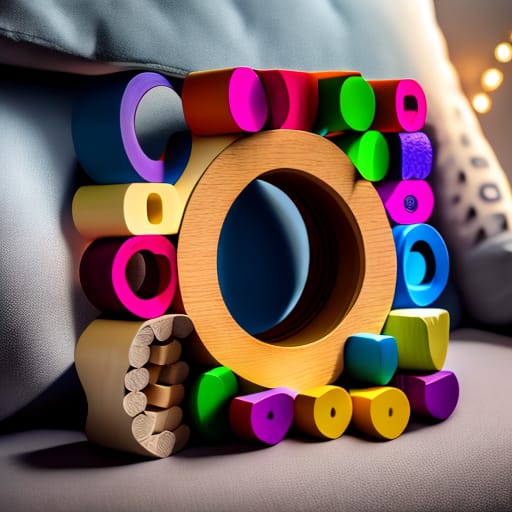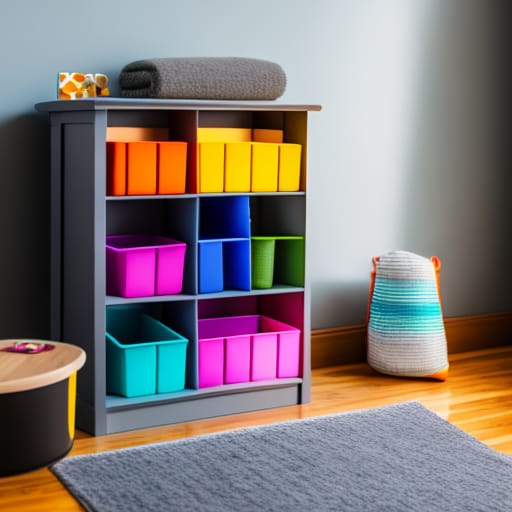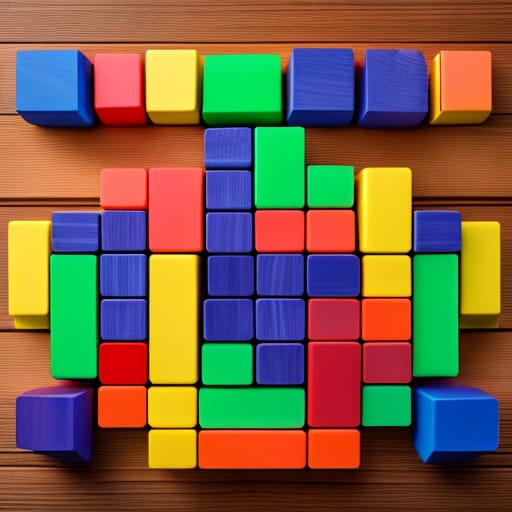Wooden building blocks are a classic toy that have entertained children for generations. More than just a fun plaything, wooden blocks offer numerous benefits for a child’s development and learning. This comprehensive beginner’s guide will explore the fascinating world of wooden blocks, the many types available, their developmental benefits, creative ways to use them, and where to find the best blocks to spark a lifetime of imagination and discovery.

Why Wooden Building Blocks are Important for Child Development
Wooden building blocks have captivated children’s attention for over a century, and for good reason. Simple wooden blocks offer open-ended play that engages a child’s problem solving skills, spatial reasoning, and creativity. The benefits of playing with wooden building blocks include:
- Develops fine motor skills – Grasping, stacking, and manipulating various shaped blocks strengthens small hand muscles and hand-eye coordination.
- Encourages spatial thinking – Envisioning and planning block structures requires spatial reasoning as a child maps out how pieces fit together.
- Teaches early engineering concepts – Exploring concepts like balance, structure, and gravity as blocks are stacked vertically and horizontally.
- Improves cognition – Block play demands focus, concentration, planning, and critical thinking.
- Sparks imagination – Open-ended play with blocks fosters creativity as children envision anything they can build.
- Teaches mathematics concepts – Counting, sorting, patterning, sequencing, and recognizing shapes.
- Promotes social-emotional skills – Taking turns, collaborating, and learning relationship skills with others.
The unique tactile and sensory experience of wooden blocks gives them an advantage over plastic alternatives. The warmth and smoothness of real wood is naturally pleasing to young hands. The extra weight of wooden blocks develops stronger grip and motor control. Studies even show children engage in more creative block play with wood pieces over plastic versions of the same sets.
For a “no tech” toy with unlimited possibilities, good quality wooden blocks have incredible power to absorb a child’s attention for extended solo play or lively group interactions. Playing with blocks is not just fun for kids, it establishes critical cognitive, social-emotional, and motor skills that form a foundation for future learning.
Types of Wooden Building Blocks
All wooden blocks are not created equal. The best wooden blocks are crafted from natural solid wood cut precisely to uniform proportions. Higher quality woods like maple or birch have a fine smooth grain. Some companies use sustainably harvested rubber trees. The following charts compare different attributes of types of wooden blocks:
| Wood Type | Hardness | Stability | Smoothness | Cost |
|---|---|---|---|---|
| Maple | Hard | Very Stable | Smooth | $$$ |
| Birch | Hard | Stable | Smooth | $$ |
| Pine | Soft | Unstable | Knotty | $ |
| Shape/Size | Versatility | Motor Skills | Example Uses |
|---|---|---|---|
| Small cubes | High | Fine motor | Stacking games, patterns |
| Medium rectangles | High | Fine/gross motor | Building structures |
| Large squares | Medium | Gross motor | Building large structures |
| Jumbo blocks | Low | Gross motor | Dramatic play spaces |
Best Wooden Block Brands
We’ve highlighted top manufacturers known for premium wood blocks designed for educational play:
Kaplan Early Learning Company – Offers highest quality solid maple Classroom Blocks plus specialty landscape, tunnel, and oversized blocks.
Community Playthings – Renowned for elegant Swiss-made heirloom birch and beech blocks precisely crafted for young children.
Roylco – Consistently produces engaging sets of colorful painted maple blocks at affordable prices.
Grimm’s – Handmade in Germany from sustainable wood with creative themes like forests, rainbows, maze buildings.
Plan Toys – Utilizes eco-friendly practices crafting creative block sets from recycled organic rubberwood.
Haba – Innovative German company making stable, durable block sets designed for open-ended play.
The finest wood blocks come from European companies adhering to strict quality and safety standards. American brands like Kaplan and Community Playthings also rate as top block makers. While imported blocks cost more upfront, their exceptional craftsmanship and durability deliver better long term value.
Best Blocks for Classrooms
Classrooms need blocks that can withstand heavy daily use from groups of eager young builders. Priorities are durability, stability, safety and storage.
Kaplan Classroom Blocks – The Cadillac of classroom blocks. Made from dense North American maple sourced from sustainable forests. Hand finished with smooth, rounded edges. The best balance of precision manufacturing and artisanal detail. Custom classroom block packages available.
Community Playthings Unit Blocks – Classic heirloom European beech blocks specially sized for early math concepts. Uniform color esthetic. Store neatly in custom shelving units with precisely fitted outlines.
Roylco Standard Wooden Blocks – Affordable classic maple blocks in a rainbow of painted colors. Block wagon for tidy storage and transport. Can mix with other Roylco sets for more variety.
For classrooms on a budget, Roylco and Melissa & Doug make high quality wooden blocks at cheaper price points. Sturdy wood cardboard blocks are another cost effective option for class use.

Top Developmental Benefits of Wooden Blocks
Open-ended block play grants a multitude of developmental benefits for children. As one of the very first toys most infants and toddlers interact with, blocks uniquely support nearly all domains of early learning.
Physical Development – Grasping, moving, stacking blocks develops fine and gross motor coordination. Hand-eye coordination improves manipulating block pieces.
Cognitive Development – Imagining structures then bringing ideas to reality involves focused critical thinking. Spatial intelligence advances visualizing objects in 3D space.
Math Concepts – Counting, sorting, sequencing, recognizing shapes, patterns, symmetry, fractions, geometry, estimation and measurement.
Literacy Skills – Storytelling, written/verbal communication describing block structures. Letter and word recognition with alphabet blocks.
Creativity and Imagination – Open-ended play sparks innovation trying new block designs. Collaborative storytelling builds narrative abilities.
Emotional Development – Block play teaches relationship skills – sharing, cooperation, turn-taking and problem solving. Mastering challenging builds brings confidence and self-esteem.
Scientific Concepts – Exploring physics, engineering and design constructing increasingly advanced block structures teaches cause/effect relationships.
A simple set of wooden blocks holds almost magical power to absorb a young child’s attention for hours while simultaneously building cognitive, social-emotional and physical skills needed for future academic success.
Creative Building Ideas with Wooden Blocks
Blank canvass toy sets like classic wooden blocks thrive on creative potential. Rather than flashy colors, lights or noise, the tactile sensation of wooden blocks piques children’s imaginations. These creative building ideas inspire kids to develop their own unique block designs:
Big City Block Building – Have kids envision the tallest skyscrapers, quaintest neighborhoods and busiest streets as they build a bustling city with residents, vehicles, parks and pets. Mixing block sizes and shapes crafts spatial diversity.
Three Little Pigs Houses – Construct the traditional straw, stick and brick houses and then take turns huffing and puffing like the Big Bad Wolf! Talk about hard and soft materials and engineering concepts.
Marble Run – Crafting a long winding channel or towering block tower for marbles to zig zag down teaches trial-and-error design skills. Encourage kids to iterate on block structures that improve speed, obstacles and satisfying crashes.
Natural Habitats Diorama – Provide real branches, rocks, pine cones and plastic animals for kids to engineer realistic enclosures and landscapes with blocks.
Storytelling Backdrops – Supply an array of small wooden blocks, people and animal figures for kids to arrange backgrounds for oral or written stories. Spark imaginary tales and vocabulary.
Block Factory – Challenge kids to collaboratively plan and orchestrate an elaborate block factory for delivering blocks. Assign block sorting/ organizing jobs like logistics coordinators, quality controllers, packagers, freight loaders, transport drivers.
Blank canvas environments like wooden blocks empower children to freely construct their own worlds limited only by imagination. Guiding with thought provoking challenges takes block play to advanced levels of creativity, storytelling and problem solving.
Top Wooden Building Block Sets
While a simple box of uniform wooden blocks offers endless play potential, specialized block sets add fun themes and learning concepts:
Alphabet Blocks
Battat Wooden ABC Block Cart – 26 cubical blocks with uppercase letters on one side, lowercase on reverse. Includes numbers 1-10. Sturdy wooden wagon with rope handle holds all blocks.
Melissa & Doug Deluxe Wooden ABC/123 Blocks Set – 50 detailed building blocks with engraved uppercase letters, lowercase letters and numbers 1-100. Colorful storage crate with handle.
Schylling Wooden Alphabet Blocks Wagon – 25 cubical blocks with uppercase engraved alphabet letters on sides. Lowercase letters stamped on tops. Wagon stores blocks.
Mathematical Building Blocks
Grimm’s Rainbow Fraction Blocks – Vibrant colored wood cubes representing different fractions. Full set enables conceptualization of fractions.
Melissa & Doug Pattern Blocks and Boards – Wooden geometric shapes in 6 colors and 5 shapes to inspire mathematical thinking. 4 pattern boards to trace outline shapes.
Hape Quadrilla Wooden Marble Run – Colorful cubes, arches, tunnels andwheels to construct a rollercoaster run for marbles. Teaches spatial planning.
Roylco Primary Color Wooden Counting Blocks – 100 wooden blocks in 4 colors and 2 shapes. Counting guide shows block combinations for numbers 1-20.
Special Themed Building Blocks
Calico Critters Town Building Blocks – Painted birch wood blocks and backdrops depicting fun locations like art museum, zoo and amusement park for toys. Promotes storytelling.
Wonderworld Wooden Building Blocks – Creative nature-themed blocks crafted into trees, logs, boulders, cliffs. Makes amazing habitats with other blocks.
Lovevery Block Set – Unique architectural-themed blocks of pillars, bridges, doors to inspire creative open-ended play. Designed by child development experts.
Plan Toys City Life Building Set – Realistically detailed streetscapes like airport, train station, hospital, school and park playground with wooden vehicles/people.
Specialty block sets like these spark additional dimensions of creative play layered onto basic building sets.

Understanding the Seven Stages of Block Play
In the 1950’s, child development theorists identified 7 distinct levels of block play evolution in children:
Stage 1: Carrying – Infants explore wooden blocks merely by transferring them from place to place.
Stage 2: Stacking – Toddlers discover stacking ability beginning with just a few blocks. Clapping with glee at accomplishments.
Stage 3: Bridging – Preschoolers start placing blocks adjacent, forming rows. Testing balance points where blocks tip over.
Stage 4: Enclosing – Building sides creates defined spaces. Starting to envision “inside” vs “outside”. Early evidence of spatial planning.
Stage 5: Patterns and Symmetry – Advancing ability to build matching structures mirroring or rotating blocks systematically.
Stage 6: Early Representational – Children incorporate pieces like people, animals, cars that start to represent real-world places like barns, roads, airports. Telling stories.
Stage 7: True Representational – Sophisticated scene creation representing detailed real-world locales. Advanced storytelling with dialog driving cooperative block creations.
This sequenced developmental theory helps parents and teachers guide young builders progressively as spatial and cooperative skills advance. Block shelves labeled with silhouette outlines allow children independence finding correct sized blocks for skill level.
Caring for Your Wooden Block Investment
Like any possession, proper care extends usefulness and value. Treat high quality wooden building blocks as an investment and they’ll educate children for generations. Here are top tips for maintaining wooden blocks:
- Always store blocks upright on shelves rather than tossed haphazardly into containers allowing moisture damage and warping.
- Organize shelves with custom block outlines guiding proper cleanup and organization.
- Every few months, inspect for damage and sand down splinters with fine grit sandpaper to prevent injury.
- As needed, wipe pieces with a wood cleaner like Murphy’s Oil Soap and lint free cloth. Avoid saturating blocks with liquid.
- For deeper cleaning, sterilize with diluted bleach then hand dry with towel. kills germs without damaging wood.
- If finishes fade, consider re-staining or painting for a fresh look.
- Ensure storage areas have sufficient ventilation and use dehumidifiers to prevent mold, mildew growth.
- Never subject wood blocks to direct sunlight or moisture which can warp wood over time.
With appropriate care and maintenance, heirloom quality maple, beech or birch blocks will serve generations of future builders.
Top Places to Buy Quality Wooden Blocks
Where are the best places to buy wooden blocks? We recommend supporting specialty toy stores and small businesses focused exclusively on high quality developmental toys rather than big box retailers. Our top recommendations:
Kaplanco.com – Educational toy leader Kaplan offers the widest selection of premium wood blocks rated best for classrooms plus custom classroom packages.
CommunityPlaythings.com – One-stop for elegant handcrafted Swiss-made European beech and maple heirloom blocks designed by child development experts.
WoodenWonders.com – Vermont based store focused exclusively on sustainably made USA crafted wooden toys and blocks supporting imaginative play.
Sarah’sSilks.com – Gorgeous hand-dyed silk swatches inspire upscale color palates for wooden pattern blocks paired with custom storage bags. Support women entrepreneurs.
TreeRing Puzzles on Etsy – Talented woodworker handcrafts gorgeous sustainable maple animal alphabet puzzles and custom building blocks from a small studio.
GrimmsToys.com – Innovative fairytale-inspired block designs and stunning rainbow finishes on smooth beech wood sustainably sourced from German forests.
Discerning customers should thoughtfully choose retailers prioritizing child development, high quality materials and manufacturing, plus eco-friendly and fair business practices. Support brands staying true to wooden blocks’ tradition of creative skill-building play rather than licensed characters or electronics.

Why Wooden Blocks Should Be Every Child’s First Toy
In closing, the architectural creativity and problem solving skills unlocked by simple wooden blocks establishes an invaluable foundation priming young minds for future learning in science, technology, engineering, art and mathematics.icolumnundeniable statistics clearly document the measurable academic and social-emotional benefits children glean from wooden block play during critical developmental windows. Beyond quantified advantages, the unstructured creativity flowing from open-ended block play often sparks a lifelong joy in learning and creation. Tree blocks may literally build the minds that someday design solutions shaping the world. For these reasons, quality wooden building blocks deserve prime position in every toy box, classroom and playroom.
Frequently Asked Questions
What are the best starter blocks for toddlers?
For toddlers, start with large hollow wooden building blocks from Melissa & Doug or IKEA that are easy to grasp and stack. Move to smaller hardwood blocks once manual dexterity develops.
Should block sets have different shape blocks?
Look for wooden block sets with at least 3-4 different standard shapes like rectangles, squares, arches. Varying forms teaches spatial skills fitting pieces together, and makes builds more interesting.
Is there an optimal number of blocks?
Aim for around 50-100+ wooden blocks in a starter set which allows for more creative configurations than very small sets. Extra blocks mean more flexibility for multiple children building simultaneously.
How long will quality wooden blocks last?
Heirloom grades hardwoods like maple, birch or beech can endure for generations if properly cared for. Avoid soft woods like pine that dent and warp easier. Durable blocks will be passed down for years.
Should parents help guide block play?
Absolutely! Parent engagement helps inspire more creative block constructions. Ask open-ended questions, make observations and encourage child to tell stories about their wooden block building projects. Don’t overly direct though; child-led exploration is key.